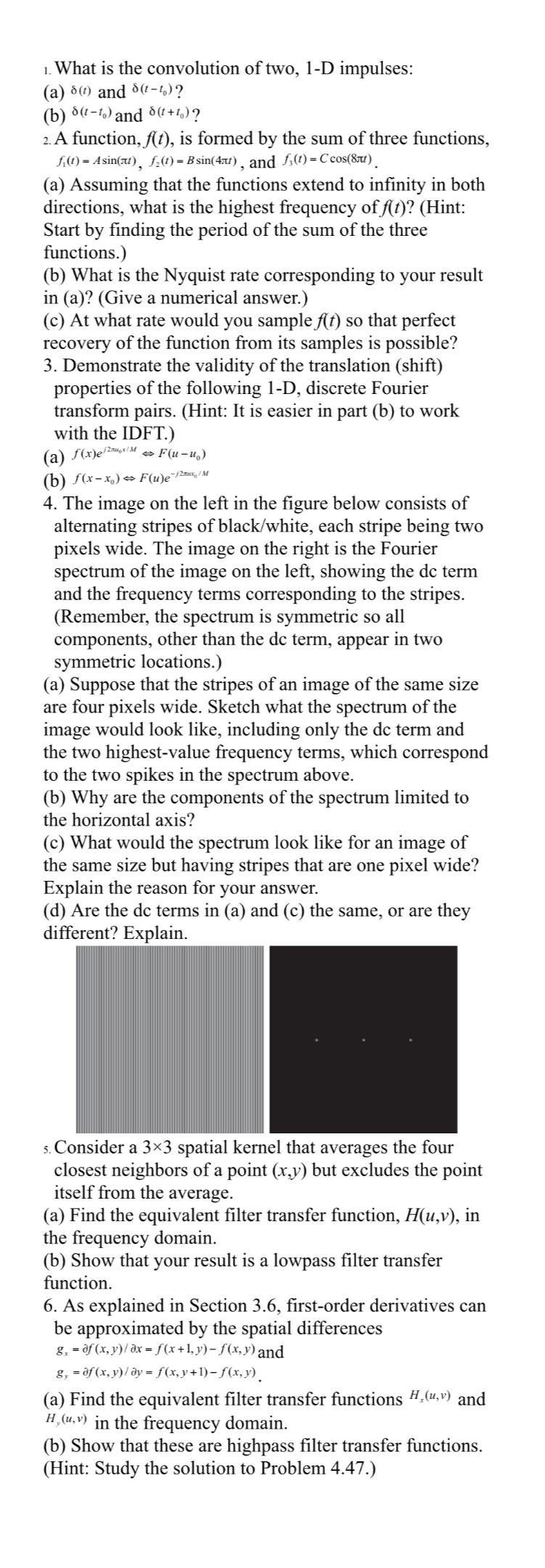Answered step by step
Verified Expert Solution
Question
1 Approved Answer
What is the convolution of two, 1 - D impulses: ( a ) ( t ) and ( t - t 0 ) ? (
What is the convolution of two, D impulses:
a and
b and
A function, is formed by the sum of three functions, AsinBsin and Ccos
a Assuming that the functions extend to infinity in both directions, what is the highest frequency of Hint: Start by finding the period of the sum of the three functions.
b What is the Nyquist rate corresponding to your result in aGive a numerical answer.
c At what rate would you sample so that perfect recovery of the function from its samples is possible?
Demonstrate the validity of the translation shift properties of the following D discrete Fourier transform pairs. Hint: It is easier in part b to work with the IDFT.
a
b
The image on the left in the figure below consists of alternating stripes of blackwhite each stripe being two pixels wide. The image on the right is the Fourier spectrum of the image on the left, showing the dc term and the frequency terms corresponding to the stripes. Remember the spectrum is symmetric so all components, other than the dc term, appear in two symmetric locations.
a Suppose that the stripes of an image of the same size are four pixels wide. Sketch what the spectrum of the image would look like, including only the dc term and the two highestvalue frequency terms, which correspond to the two spikes in the spectrum above.
b Why are the components of the spectrum limited to the horizontal axis?
c What would the spectrum look like for an image of the same size but having stripes that are one pixel wide? Explain the reason for your answer.
d Are the dc terms in a and c the same, or are they different? Explain.
Consider a spatial kernel that averages the four closest neighbors of a point but excludes the point itself from the average.
a Find the equivalent filter transfer function, in the frequency domain.
b Show that your result is a lowpass filter transfer function.
As explained in Section firstorder derivatives can be approximated by the spatial differences
delfelx and
delfely
a Find the equivalent filter transfer functions and in the frequency domain.
b Show that these are highpass filter transfer functions.
Hint: Study the solution to Problem

Step by Step Solution
There are 3 Steps involved in it
Step: 1

Get Instant Access to Expert-Tailored Solutions
See step-by-step solutions with expert insights and AI powered tools for academic success
Step: 2

Step: 3

Ace Your Homework with AI
Get the answers you need in no time with our AI-driven, step-by-step assistance
Get Started


